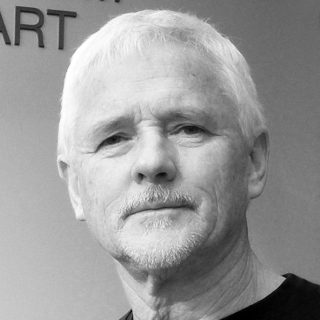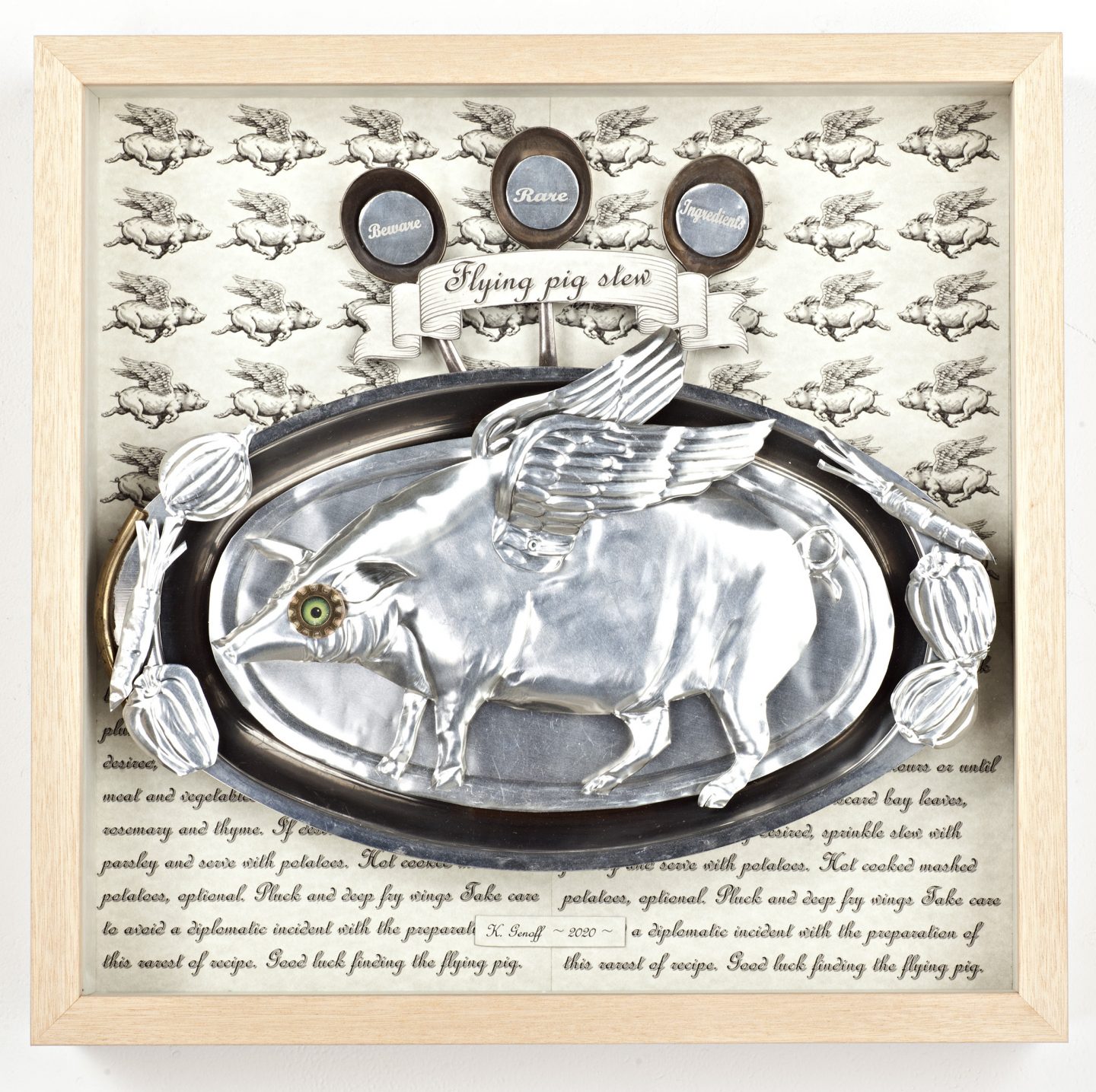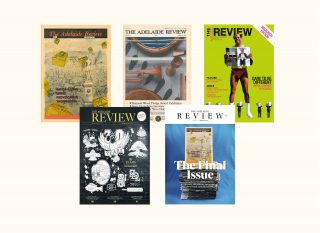
John Neylon
John Neylon is an award-winning art critic and the author of several books on South Australian artists including Hans Heysen: Into The Light (2004), Aldo Iacobelli: I love painting (2006), and Robert Hannaford: Natural Eye (2007).

Organic forms and found objects form the inspirations behind the work of two artists exhibiting together.
Karen Genoff says that this ‘Strange Brew’ set of works “reflects aspects of the everyday and, equally, the strangeness of these times”. They draw on the artist’s love of cooking, reading and writing and reflect her long-term habit of collecting and working with found objects.
The works are grouped in thematic sets. ‘Strange Brew’ consists of tongue in cheek works centered around the idea of creating meals. ‘Flight’ is all about things with wings – and a daughter leaving home. In ‘Alphabetical’ the artist explores the idea of an invented alphabet.
Genoff describes the calligraphic shapes within these works as her “puppets and characters”. ‘Found Objects’ sees the artist rifling through boxes of archived materials and objects.
Envisage an eagle-eyed artist haunting the Port Market, Hindmarsh Disposals, garage sales, Salvos, Vinnies– hunting and gathering. Then, at home, arranging these pre-loved treasures ripe for re-tasking. Then maybe letting them sit there for a while – having something to say for
themselves. Some do and others don’t. It’s that kind of process. If a concept emerges they might come together as if meant to be.
Genoff regards assemblage work as “probably the best way to engage with materials and play with ideas. It offers a breadth of approaches with the inclusion of found objects, creating
patterns with my simple inkjet printer…Just let me embrace the concept and I will assemble… let the materials collide and they always speak to me… let me move everything around until it feels right to me. Let me layer, or take a layer away, eliminate… they always start talking to each other.”
Genoff ’s practice has always been characterised by a fierce determination to make things work
and the conviction that whatever presents itself in daily life has the potential to become art or be drawn into a never ending story. This story, as Strange Brew exemplifies, is a complex interweaving of domestic, highly personal and global subjects and concerns. My comments made about a previous Genoff exhibition (Alphabetica Imaginata 2017) still apply: In the routine of a daily life acted out on a quarter acre block in Adelaide the often familiar and mundane objects rise up to present themselves in different ways; they almost beg for
transformation.
Genoff ’s practice represents unfinished business. Its methods and materiality belong to a Pop era which used assemblage as a weapon. In staying the course, the artist has developed a rich vocabulary of forms which can express the rawness of personal emotion and
anger of social protest while still engaging the imagination through playfulness and ironic humour. This is particularly evident in the ‘Strange Brew’ series with its ‘plates’ mounted
like armorial shields, spelling out the ominous consequences of overconsumption, and I’m over the whole sustainability debate.
Peter Syndicas’ sculptures work on the simplest of principles. They have been inspired by a fascination with organic shapes as encountered in nature. He says that he searches “specifically for twigs that portray a human figure as it gives each sculpture…a unique duality. On the one hand they are magnified reproductions of fragile twigs, while at the same time they display these very expressive abstract human forms.” His preferred media are bronze, steel and stone.
The artist considers the stark contrast between the fragility of the source materials, such as a twig, and the monumental, enduring materiality of stone or metal. This gives presence to his forms. The fact that these sculptures are scaled up ‘versions’ of the originals further distances them from their source and allows them to function as artworks.
In terms of the exhibition’s theme, ‘Origins’, he considers that a twig shaped in a human form has the capacity to act as a metaphor for lived existence. A small twig, as he sees it, has not only been shaped by its parent tree but the action of wind, rain and its immediate surroundings in much the same way heritage and environments “shape us as humans”.
This realisation is based on personal experience. Both his parents’ families were forced to emigrate from Alexandria, Egypt, to Australia in the 1950s. His mother’s family was from an
Italian background and his father’s from a Greek, Austrian, French and Maltese.
He grew up with a strong sense of connection to his cultural background and has always felt strongly that family origins help to define self-identity. A ‘typical’ Syndicas sculpture is an
attenuated twig or limb, balanced like a modern dancer on one of its extremities. When fashioned from polished bronze these slender linear structures tend to dissolve in the light or blend with the background. In a natural setting these sculptures insinuate rather than command their presence. In ‘Origins’, ‘twig’ sculptures are complemented by marble, granite
and bronze works that evoke human forms in more obvious ways.
The articulation – headless torsos twisted into contrapposto or star jump poses – offer a very different set of readings to the twig forms. Their presence highlights the riskiness of pushing the human figure resemblance too far. Their slender, twig-like counterparts strike a more nuanced, inventive balance between nature and artifice.

John Neylon is an award-winning art critic and the author of several books on South Australian artists including Hans Heysen: Into The Light (2004), Aldo Iacobelli: I love painting (2006), and Robert Hannaford: Natural Eye (2007).
